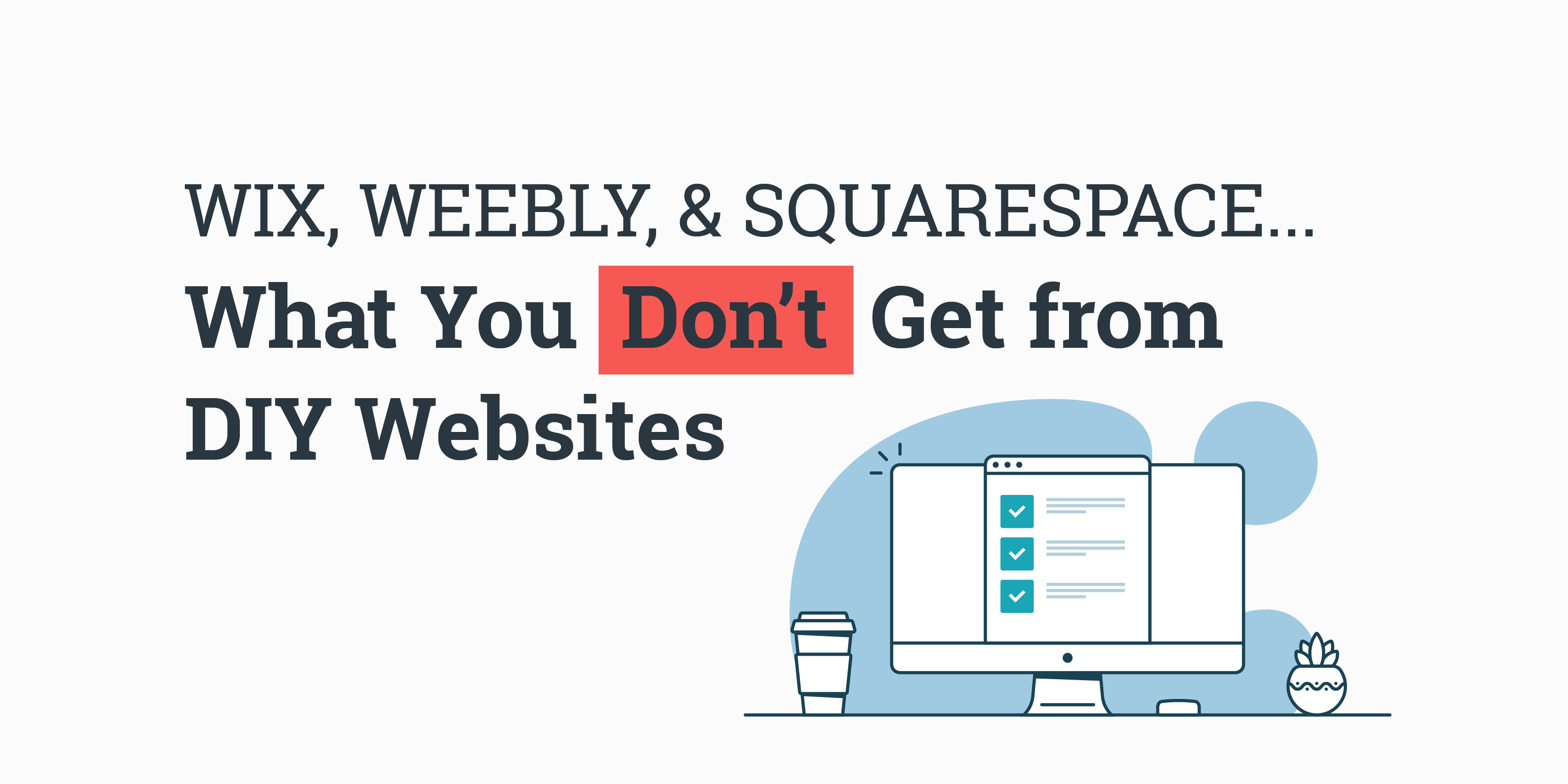Wix, Weebly, & Squarespace…What You Don’t Get from DIY Websites
Lisa Hirst Carnes | December 2019

Our country is filled with DIYers. Thanks to YouTube, we can learn how to do just about anything by watching a video or two. While there’s a bit of sarcasm there, videos are super helpful for learning new things.
Just last night, I learned how to fold a throw blanket “like a magazine stylist”. *Insert eye roll.*
It’s fun to learn new things, but there are some things – like designing a new website – that may not be DIY friendly.
Designing a functional website that offers a good user experience is not as easy as it looks. In fact, good design makes things seem simple and streamlined. Without an industry expert at your side, there are many considerations that may be overlooked.
You wouldn’t guess that by the number of DIY platforms available today.
DIY websites are everywhere. The companies promoting them run ads on TV and the internet, each one promising a stunning, cutting-edge website for just a few dollars a month.
ALSO READ: 11 Best Website Builders for Nonprofits
Have you ever had the impression that these offers might be too good to be true?
To be sure, you can get a good deal from a company like Wix. If you have a brand-new start up, or just need a simple online brochure that exists as an afterthought to your marketing plans, then one of their templates might do the job. However, if you need a fully functional website for your organization that offers sophisticated functionality, a DIY website might not be the bargain you think it is.
To help you understand why, let’s look at a few things you don’t get from DIY website platforms.
The Ability to Customize Your Website to Fit Your Brand
DIY website services work off of templates. You choose a basic layout and then plug in your images and text. That might be relatively quick, but it isn’t going to allow you to make big changes to the look or structure of your site.
This can be a bigger disadvantage than you might initially realize. One of the goals of your website should be to help you stand apart from your competition, not to look just like every other brand on the web. You need pages that look and feel like they match your brand, not ones that were slapped together as quickly as possible.
UX Best Practices
An expert keeps track of the ever changing landscape of digital and always uses best practices when it comes to designing a website. User experience is complex and unless you’ve done your UX homework, you’ll most likely miss the mark.
An experienced team does more than understand what makes best practice, best practice. They’ve created the best practices – often through trials and tribulations.
Messaging-First Approach
You need compelling content to engage your audience. A DIY website platform may allow you to easily create pages, but it won’t help you write content that connects with your audience. We’ve talked a lot about content on this blog. In our experience, it’s often the part of the project that causes extra stress and requires an outsider’s perspective.
A good creative team can break the content piece down to manageable, bite-sized pieces.
Fast and Consistent Website Performance
Because template websites have to be built with dozens or hundreds of possible uses in mind, they feature many different built-in features and plug-ins. That sounds like a good thing, but it isn’t.
With all of that extra coding in the background, your website is likely to run much more slowly than you would expect. It can also inhibit your search engine visibility. It’s much better to have a custom-built website that includes only the tools you need, rather than dozens of programs the developers thought you might want someday.
The Option to Grow and Expand Your Website
As serious as these first two shortcomings are, they don’t represent the biggest problem with DIY websites. The most important shortcoming is that they limit your potential for growth and expansion in the future.
All websites need to be improved and marketed as time goes on. They also have to be updated as the business expands and evolves. This means you’ll soon outgrow a DIY template and find yourself starting over from scratch. Given the time and expense involved in creating a professional web presence, it’s better to simply do things the right way from the beginning.
SEO Best Practices
You want people to be able to find your website, right? That means you need to implement SEO best practices. The problem is, you don’t know SEO. Even if you have some knowledge of SEO, it’s a constantly evolving landscape. Without an expert you’ll be spinning your wheels. Trust us on this one.
How to Get the Professional Website You Need
While we don’t recommend that most brands use DIY website templates, we aren’t suggesting that you do a custom website without a solid plan. At ArcStone, we’ll review your objectives and the functionality you need, and compile a blueprint that serves as a roadmap during the web design process. The trick to getting great value is working with a small, efficient, and committed team that can give you exactly what you want and need, without skimping on expertise or passing along massive overhead expenses.
That’s where an agency like ArcStone comes in. If you want the best in web design, development, and messaging – including personal service and a modern marketing plan that helps your organization grow – contact us today. We’ll be happy to schedule a free consultation and help you find the answers you need.
